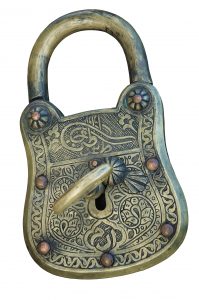 One of the greatest requirements that one had to meet to become a master locksmith and a member of any guild was producing a master piece. The Latin word for master piece is Magnus Opus, and the French word is Chef D’œuvre. A master piece refers to a piece of work that has been given critical praise and is considered the greatest work in a person’s career. In Locksmith history, it is high standard work produced so as to obtain membership into a Locksmiths Guild or Academy. In this document, Safes Service Los Angeles covers the greatest lock masterpieces of ancient times. Let’s get started right away.
One of the greatest requirements that one had to meet to become a master locksmith and a member of any guild was producing a master piece. The Latin word for master piece is Magnus Opus, and the French word is Chef D’œuvre. A master piece refers to a piece of work that has been given critical praise and is considered the greatest work in a person’s career. In Locksmith history, it is high standard work produced so as to obtain membership into a Locksmiths Guild or Academy. In this document, Safes Service Los Angeles covers the greatest lock masterpieces of ancient times. Let’s get started right away.
Abloy Cylinder Locks
These locks were invented in 1907 by Emil Henriksson. The name was derived from AB L (Ukko) Oy. Additionally, these locks were manufactured by a company that was founded in the year 1732 and known as Bjorkboda.
The Bar Iron
This locking mechanism was produced directly from a blast furnace after being refined. The iron was then pounded with helve hammers so as to ensure minimal carbon content. The lock was produced in different forgery places within Sweden. It was then sold to local locksmiths or exported to other countries. This masterpiece lock was placed on double doors or a single door. As such, the intended place of use was critical before manufacturing the lock. This was done in order to determine the strength level and the design.
The Castle Locksmiths
These are locks that were produced by locksmiths working at manor houses or the castles. These were basically designed to ensure a superior skill and a fine sense of design was used during the manufacturing process.
The Chinese Padlock
Made of Brass and Bronze, the Chinese padlock had two ward springs and also an arched shackle. The padlock was box shaped and in the shape of animals and other different creative shapes. During ancient times, this was deemed to be a top security lock.
The Decorative Door Lock
This lock had decorations drawn on the front visible parts of the lock handle. These included locks that had turning handles made of iron and some other metals. They were produced in the 16th century and used until the 17th century.
The Electric Locks
This generation of locks was made using scanners and had a control unit that assessed the codes once they are scanned. These electrical codes were stored on magnetic cards and used to access the rooms on which the locks were placed.
The Fetter Locks
This was a simple padlock made with ward springs and also had an arched shackle. The locks were used mostly in the 19th century.
These are some of the lock master pieces of ancient times. The designers were members of locksmith guilds and were highly recognized by locksmiths around the world.
